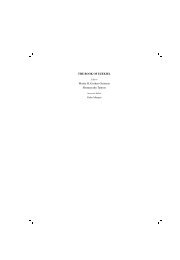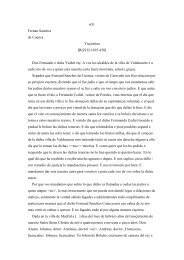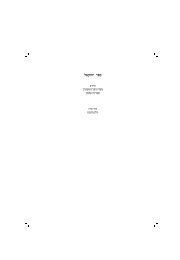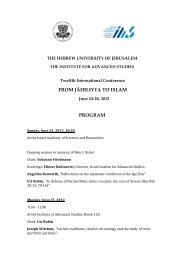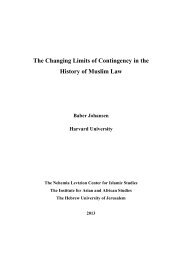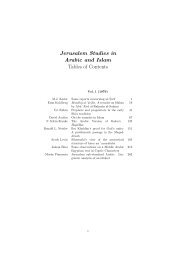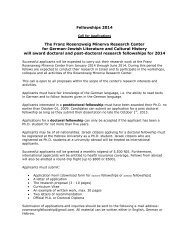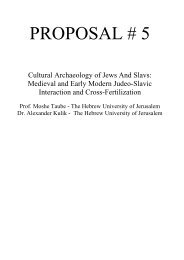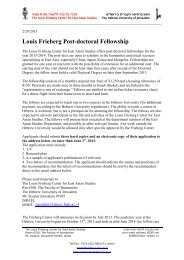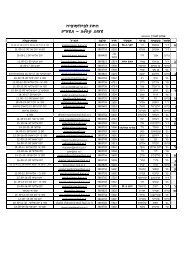Proverbs 7 in MT and LXX: Form and Content
Proverbs 7 in MT and LXX: Form and Content
Proverbs 7 in MT and LXX: Form and Content
You also want an ePaper? Increase the reach of your titles
YUMPU automatically turns print PDFs into web optimized ePapers that Google loves.
<strong>Proverbs</strong> 7 <strong>MT</strong> <strong>and</strong> <strong>LXX</strong> 165<br />
Verse 25<br />
<br />
* <br />
<br />
<br />
+ + H1 + 9* 1B<br />
<br />
+# "*1B<br />
c b a *<br />
b’ c’+a’ * <br />
While the synonymous stichs are kept <strong>in</strong>tact <strong>in</strong> the surround<strong>in</strong>g verses, <strong>in</strong><br />
v. 25 the second stich is miss<strong>in</strong>g <strong>in</strong> the <strong>LXX</strong> altogether. The <strong>MT</strong> is<br />
undoubtedly orig<strong>in</strong>al, as proven by the structure of these last verses. Is this<br />
the last expression of our translator’s <strong>in</strong>dependence <strong>in</strong> this speech?<br />
Admittedly, he never skipped an entire stich but rather preferred to forgo<br />
repetition by fus<strong>in</strong>g together parallel redundant elements. However, how<br />
can we expla<strong>in</strong> the omission of the second stich? There is no apparent sign<br />
to suggest an accidental omission either <strong>in</strong> Hebrew or <strong>in</strong> Greek. Rather,<br />
after hav<strong>in</strong>g translated the first stich literally, he must have felt that another<br />
l<strong>in</strong>e with a similar verb <strong>and</strong> a second reference to ‘her ways’ would be<br />
redundant. The contents, however, rema<strong>in</strong>s the same.<br />
Verse 26<br />
<br />
* <br />
<br />
& ('<br />
<br />
! ( "1 .<br />
<br />
+@=1. ="<br />
b a *<br />
b’ a’ *<br />
The translator improves the parallelism by turn<strong>in</strong>g @ ‘her victims’ <strong>in</strong>to a<br />
verbal relative clause: ' ‘those whom she has sla<strong>in</strong>’; cf. vv. 12,<br />
16 where he added a verb to achieve a better parallelism. In the course of<br />
the reformulation he left out the word that <strong>in</strong> the Hebrew serves ma<strong>in</strong>ly<br />
to ma<strong>in</strong>ta<strong>in</strong> the balance between the stichs.<br />
____________<br />
beg<strong>in</strong>n<strong>in</strong>g of the speech (vv. 4–6). In ch. 4, on the other h<strong>and</strong>, the <strong>in</strong>terchange of<br />
plural (4:1–2) <strong>and</strong> s<strong>in</strong>gular (4:10ff) is reflected <strong>in</strong> the <strong>LXX</strong> as well.



